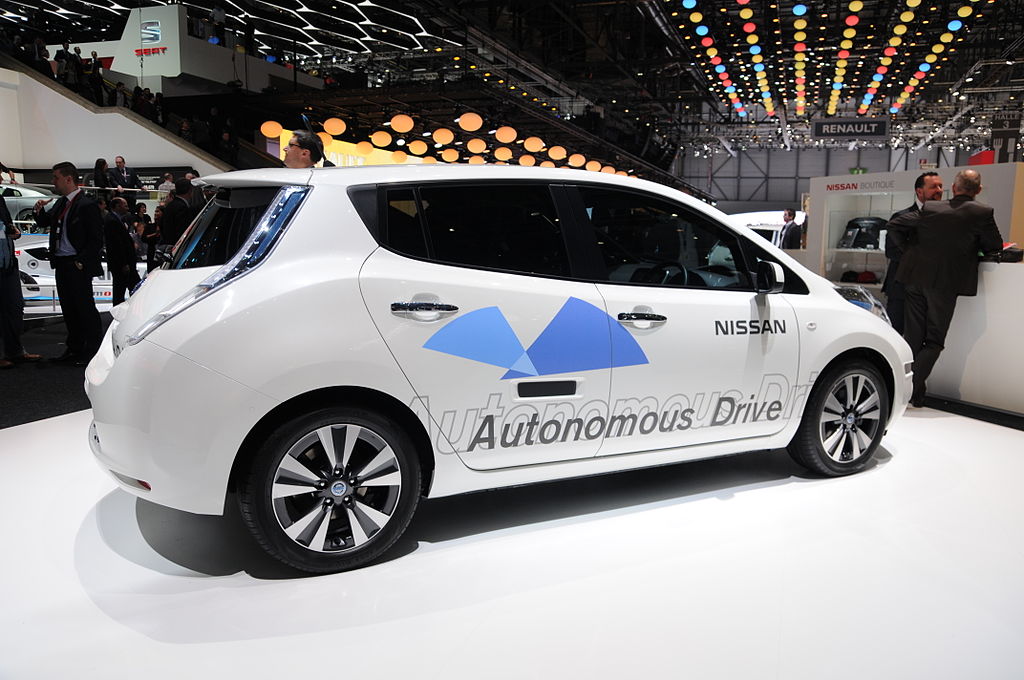Developing self driving cars is the centerpiece of the Chinese government’s plan to redesign its manufacturing and technology sector. The Chinese have coined the term Intelligent and Connected Vehicles (ICV) (智能网联汽车)as their technical term for the China version of what is an international race towards a difficult technical goal. The ICV is an ideal goal for China because it combines elements of all three of its current key technology programs: Made in China 2025, Internet+, and the Artificial Intelligence Strategic Plan.
As is typical of the Chinese system, the central government seeks to place itself on top of the system, providing guidance and control from the top down. In furtherance of this goal, the PRC Ministry of Industry and Information Technology just issued the following comprehensive set of national guidelines (建设指南) to provide the framework for developing ICVs in China:
1. National Guidelines for Developing the Standards System of the Telematics Industry (Overall Requirements) (国家车联网产业标准体系建设指南 (总体要求)). (June 2018)
2. National Guidelines for Developing the Standards System of the Telematics Industry (Intelligent and Connected Vehicles) (国家车联网产业标准体系建设指南 (智能网联汽车) (December 27, 2017)
3. National Guidelines for Developing the Standards System of the Telematics Industry (Information Communication) (国家车联网产业标准体系建设指南 (信息通信) (June 2018).
4. National Guidelines for Developing the Standards System of the Telematics Industry (Electronic Products and Services) (国家车联网产业标准体 系建设指南 (电子产品和服务) (June 2018).
Though the Guidelines are detailed and complete, these are only guidelines; they are a standard to be followed for drafting binding regulations and statutes. The Guidelines set a the path to be followed, but the real work remains to be done.
To date, the most important regulation with substantive impact is the Intelligent and Connected Vehicle Test Management Practices (智能网联汽车测试管理规范) issued on April 12, 2018. Under this regulation, individual Chinese cities are permitted to develop standards for on the road testing of autonomous driving vehicles on public roads. In response to this new regulation, Chinese cities that seek to host development of ICVs are working with the players to host testing in their own city. The typical regional divisions that characterize Chinese technology development are already taking form:
1. Beijing has set up a licensing program for Baidu.
2. Shanghai has set a licensing program for Alibaba.
3. Shenzhen has set up a licensing program for Tencent.
Each city is seeking to establish its own regional champion in this new area. To avoid being left behind, other Chinese cities are creating their own ICV testing programs. For example, the city of Tianjin recently announced an ICV testing program in collaboration with the Tianjin Intelligent Connected Vehicle Industry Research Institute. It is expected other Chinese cities will follow suit, with all of them seeking to create a regional (not national) ICV champion.
This movement towards regionalICV champions is contrary to the MIIT goal. Note this move to city/regional based ICV fiefdoms is dramatically different from the experience in the United States. California recently opened its roads to self-driving car testing. In response, over 50 different manufacturers have chosen to conduct tests on California roads. Consistent with general U.S. policy, California makes no attempt to favor one company over the other. The market will choose the winner. The Chinese system is developing in exactly the opposite direction, where regional governments are picking their winner in advance. Developments over the next decade will show which system works best.
In developing ICV, technology is everything. The Chinese central and regional governments have plenty of money for developing this program. But that money will be used in classic Chinese fashion. It will be used to purchase land and to build factories.
But the question for China is what will those factories actually do? Without the most advanced technology, the factories will do nothing more than build the sort of low standard electric vehicles that already clutter the roads of China’s second tier cities. For the second tier cities like Tianjin, the technology issue is even more acute because the players in Beijing/Shanghai/Shenzhen are not planning to share their technology; it is every region for itself. So each regional player is faced with an existential issue: after the factories are built, from where will the ICV technology come?
The search for technology will be intense. A huge company like Alibaba can perhaps develop the technology on its own. But that only works for the Shanghai fiefdom. What about everyone else? In response, Chinese regional governments, research centers and production companies will be scouring the world for the latest in ICV technology. Since China currently appears to be the major market for electric and ICV vehicles, foreign companies will need to decide whether they want to work in China or not. For those companies that decide to work in China, the real issue will come down to the issue we continuously raise on this blog. Will you retain control over the technology or will you give it away?
This growing market for ICV technology is an opportunity for foreign companies, but as with all technology deals involving China, foreign companies need to be wary about IP theft and forced transfer of technology to Chinese companies.
What’s it going to be?

























